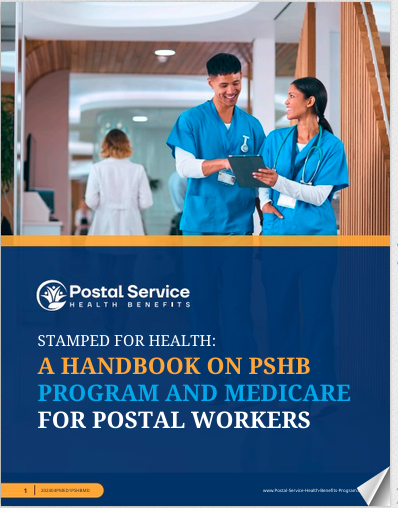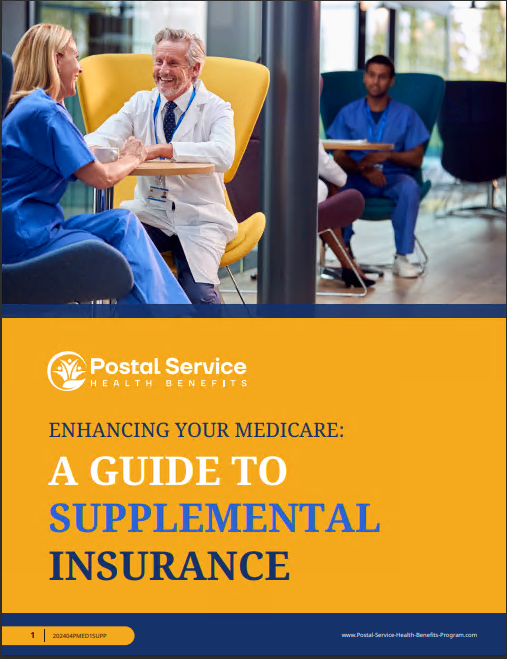Key Takeaways
-
Understanding how Medicare works with the Postal Service Health Benefits (PSHB) program can help you make smarter healthcare choices.
-
Choosing the right combination of Medicare and PSHB coverage can lower out-of-pocket costs while ensuring comprehensive benefits.
Navigating Medicare and PSHB Together: What You Need to Know
The shift to the Postal Service Health Benefits (PSHB) program brings significant changes to healthcare for postal workers and retirees. If you’re nearing retirement or already enrolled, you might be wondering how Medicare fits into this new landscape. Combining Medicare with PSHB can lead to lower healthcare costs, but only if you understand how the two programs interact. Here’s what you should keep in mind when deciding on your coverage options.
1. Medicare Enrollment Rules for Postal Annuitants
If you’re retired or planning to retire soon, enrolling in Medicare is a critical step. Here’s what you need to know:
-
Medicare Part A: Most retirees qualify for premium-free Part A if they have worked and paid Medicare taxes for at least 10 years. Part A covers hospital stays, skilled nursing care, and hospice services.
-
Medicare Part B: Enrollment in Part B is required to maintain PSHB coverage in retirement unless you qualify for an exemption. Part B covers doctor visits, outpatient care, preventive services, and medical supplies.
-
Medicare Part D: If you are enrolled in PSHB and Medicare, you will automatically receive Part D prescription drug coverage through your PSHB plan’s Employer Group Waiver Plan (EGWP). This helps reduce drug costs compared to standalone Part D plans.
What to Consider: Enrolling in Part B is an added expense, but PSHB plans often reduce cost-sharing, such as lower copayments and deductibles, for members with both Medicare and PSHB. Skipping Part B could result in losing PSHB coverage, making future healthcare much more expensive.
2. How Medicare Impacts Your PSHB Costs
Medicare-eligible PSHB retirees may see reduced out-of-pocket costs, but it depends on how you coordinate your benefits. Here’s how costs break down:
-
Deductibles and Copayments: Many PSHB plans waive deductibles and reduce copayments if you have both Medicare Parts A and B.
-
Out-of-Pocket Maximums: Medicare acts as the primary payer, covering many expenses before your PSHB plan kicks in. This can significantly lower what you pay for doctor visits, hospital stays, and outpatient services.
-
Prescription Drug Costs: With Medicare Part D through your PSHB plan, you benefit from the new $2,000 cap on out-of-pocket prescription drug expenses in 2025. This protects you from excessive medication costs.
What to Consider: If you opt out of Part B, you may face higher PSHB cost-sharing, which could add up quickly. Weigh the costs of Medicare premiums against the potential savings on medical services.
3. Choosing the Right PSHB Plan for Your Needs
Not all PSHB plans work the same way with Medicare. Some plans offer enhanced benefits for Medicare enrollees, while others may not provide as many cost-saving advantages. Here’s how to evaluate your options:
-
Look for Plans with Medicare Integration: Some PSHB plans waive deductibles and lower copayments for Medicare enrollees.
-
Consider Prescription Drug Coverage: Since all PSHB plans include Medicare Part D coverage, compare formularies to ensure your medications are covered at the lowest possible cost.
-
Check Provider Networks: If you travel frequently, confirm that your plan provides nationwide or out-of-network coverage that aligns with Medicare’s flexibility.
What to Consider: If you have specific healthcare needs, choosing a PSHB plan that complements Medicare benefits can lead to better coverage and cost savings.
4. The Impact of Medicare on PSHB Premiums and Contributions
Your healthcare costs in retirement depend on how PSHB and Medicare work together. Here’s what affects your costs:
-
Government Contributions: The federal government continues to cover a portion of PSHB premiums in retirement, but your share depends on your selected plan and Medicare enrollment.
-
Medicare Premiums: The standard Medicare Part B premium in 2025 is $185 per month. If your income is above a certain threshold, you may pay an additional Income-Related Monthly Adjustment Amount (IRMAA).
-
PSHB Premium Adjustments: Some PSHB plans offer reimbursements for Part B premiums, which can help offset the cost of enrollment.
What to Consider: If you’re eligible for premium reimbursement from your PSHB plan, enrolling in Medicare Part B could provide significant savings over time.
5. Timing Matters: When to Make Your Medicare and PSHB Decisions
Understanding the right time to enroll in Medicare and select your PSHB plan is essential to avoid penalties and maintain continuous coverage. Here’s what to keep in mind:
-
Initial Enrollment Period (IEP): Your first chance to enroll in Medicare starts three months before you turn 65 and lasts until three months after your birthday month.
-
Open Season for PSHB: Each year, you can review and change your PSHB plan during the Open Season period from November 11 to December 13.
-
Special Enrollment Periods (SEPs): If you delay Medicare Part B due to active employment, you have eight months after leaving your job to enroll without penalty.
What to Consider: Missing enrollment deadlines could lead to higher costs, penalties, and even loss of coverage. Plan ahead to ensure a smooth transition.
Making an Informed Decision for a Stronger Healthcare Plan
The transition to the PSHB program means understanding how Medicare fits into your healthcare strategy. While Medicare enrollment is required for most postal retirees, the benefits of combining Medicare with PSHB—such as lower deductibles, reduced copayments, and capped drug costs—can outweigh the additional premium costs. Taking time to evaluate your options can help you secure a more affordable and comprehensive healthcare plan.
Need personalized guidance? Reach out to a licensed agent listed on this website to explore your Medicare and PSHB options and make sure you’re getting the best coverage for your needs.







